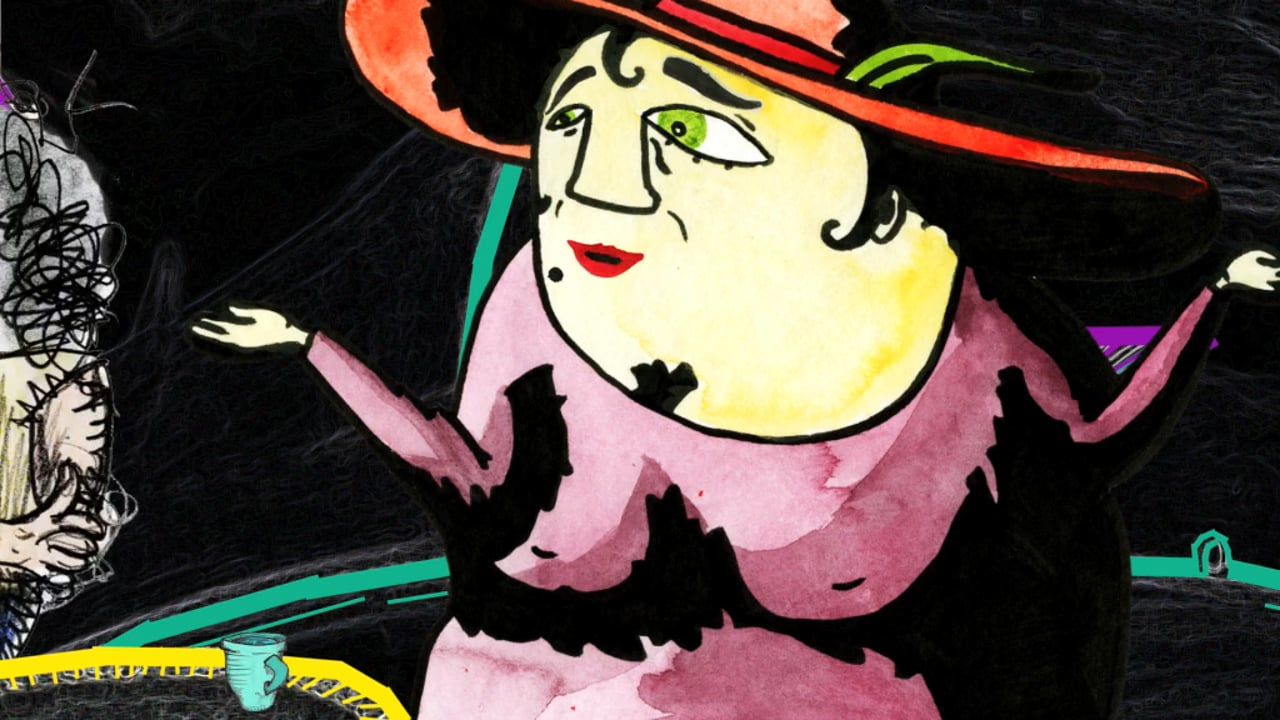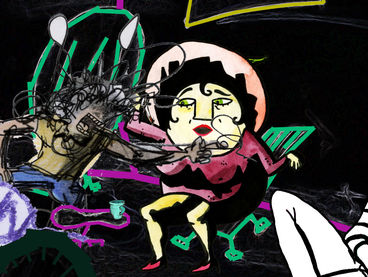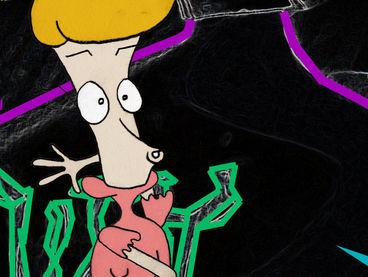MOOZ – audiovisual arts collection
Humble Pie
2009, 4:26 min., animation
Idea: Marcus Zilz
Animation: Marcus Zilz, Simon Steinhorst, Katharina Huber, Nicole Wegner
Sound: Marcus Zilz
Production: Academy of Media Arts Cologne
Advisor: Prof. Raimund Krumme
German title: kleine Brötchen. Spiel für 5 Figuren
A round table. Even, cartoon characters have to come to terms with themselves and what their parents have given them to take along. A snapshot.
Some people are shy when showing their drawings, others on the contrary enjoy the reactions that these produce in the other. But, what do the drawings think of themselves and their peers? In a group therapy session, five animated-drawn characters are gathered, each with its own characteristic style. The discussion takes place between chaos and absurdity, with some points of lucidity and valid claims from the feelings of each of them. The therapist who leads the session also has its highlights. He is a well-defined drawing, with sharp contours and flat colored fills; and animated as a 2D puppet.
There is a lady, she is drawn with water color and black ink and animated in a limited way, she exposes the fear she had when going out to the city. The analyst tries to calm her down and tells her that they are now together, I assume to help each other. That does not happen during the time we observe them. The gesture drawing complains about the person who draw him. He is build up by a loose gesture drawing and the animation is extremely vibrant. With a play of words, the therapist affirms that this is not the image to be painted (the session? Or the drawings themselves?), and defends the subjectivity of the artist. -This could make reference to both, the artist’s perception and the will to represent characters in a particular way. - After all, that's what animation is all about, the therapist punctuates. A girl drawn with black and white, and animated in a softer way than the others, tells the gesture drawing that surely his cartoonist is not so good with the pencil. He responds by threatening to throw at her a bucket of paint (indirectly referring to the tools of digital image editing programs), you'd better make sure all your lines are closed, he adds.
The discomfort of the characters is widespread. And between the lines, we can see plenty of jokes related to the animator’s profession. The lady says that she feels unaccepted in a society that does not respond to popular taste. The gesture drawing questions what is taste, inquiring the ideal standards. The therapist replies: yes, although we talk about fantasy, everyone wants things to look realistic. And from there he falls into a crisis loop (another joke in relation to animation), with a reference to the lack of time and talent of his mother to ... I suppose to draw and animate him better. Other objections are exposed in the session, the lack of color on the part of the girl, and the complaints of a drawing with a children's style about his own movement, which is out of control.
Suggested by the title, five animated characters participate in a play, each one is depicted by a different drawing style and a distinctive use of idiom and slang. The short film humorously reveals to us the interests of the author: the low acceptance of the other, the conflicts of the artist-animator, the standardized taste of the viewers and the exacerbation of a supposed fantasy covered in realism.
Text – Tania de León Yong
Marcus Zilz, born in 1982 in Cologne, completed training in precision engineering and worked in the fields of sound technology, theater, and music. After studies at the KHM (2007–2012) Marcus Zilz founded, along with colleagues, the animation collective hi&Moinsen, and he now works mostly as a sound designer, voice actor, musician, and animator, especially for animated and experimental films, but also for dance. With support from the Cultural Affairs Office of the City of Cologne and Ulrich Weiß he created a sound studio for the local cultural scene in 2020.












